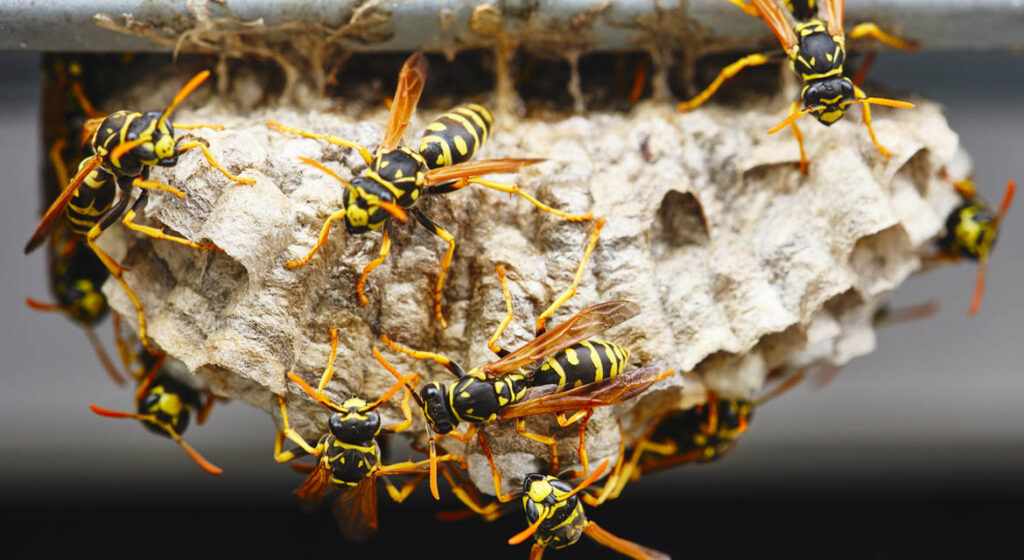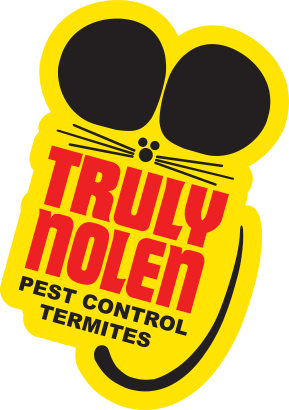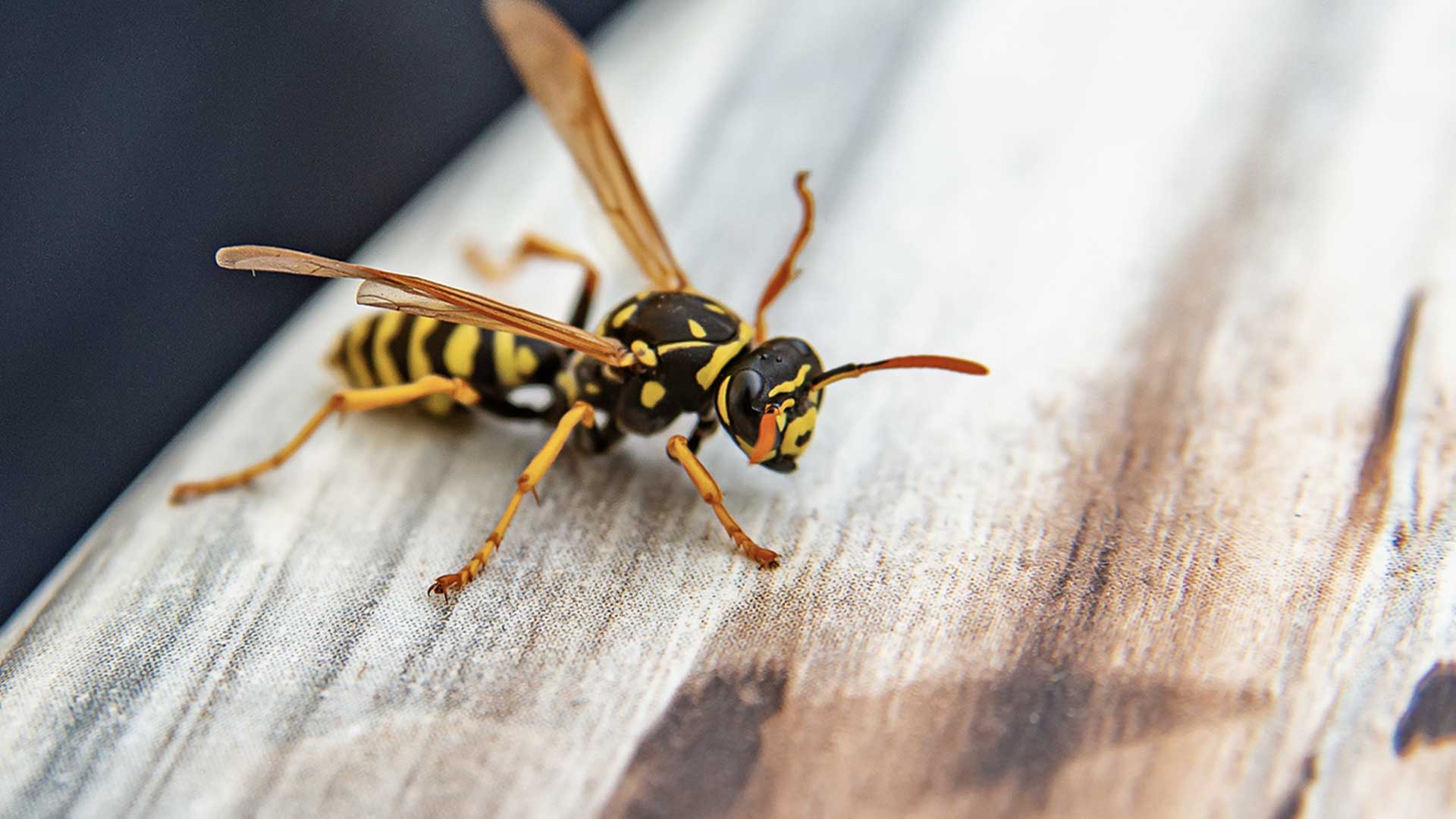
Wasp vs. Bee: How to Spot the Difference
It can be hard to tell the difference between wasps and bees. Both belong to the same order Hymenoptera, but there are some key differences that can help you differentiate between them. Here are three key points of difference:
- Wasps have smooth, shiny bodies with bright colors like yellow and black, while bees are hairy and have more robust bodies with a variety of colors.
- Wasps are carnivorous predators that feed on insects, spiders, and sometimes nectar, whereas bees primarily collect pollen and nectar from flowers.
- Wasps can be solitary or live in colonies with hierarchical structures, while bees have highly organized social structures with queens, drones, and worker bees.
Overview of Differences Between Wasps and Bees
One of the most noticeable differences is where they live. Honey bees typically live in hives with thousands of other bees, while solitary wasps build their nests alone in wood or tree cavities. If you see a group of flying insects going in and out of a small hole in the ground or a wall, it will likely be a type of wasp.
Another difference is their size and coloration. Hornets are a type of wasp with larger bodies and stingers than other species. They also tend to have more black markings on their bodies than bees, usually yellow and black or brownish-orange.
While both bees and wasps can sting, it’s important to note that not all stinging insects are aggressive toward humans. Bees will only sting if they feel threatened or if their hive is disturbed, while some species of wasps can be more territorial and aggressive.
In terms of what they produce, honey bees are known for producing honey and wax, which has many uses, from candles to skincare products. Wasps do not produce these substances as they don’t have the same physical and social structure as honey bees.
Differentiating between these flying insects may seem daunting at first, but with practice, it becomes easier to identify them based on their physical characteristics and behavior patterns. Here, we’ll explore how you can tell the difference between these flying insects, so you can stay safe while enjoying your time outdoors.
Physical Differences Between Wasps and Bees
Slender Body vs. Round Body Shape
One of the most noticeable physical differences between wasps and bees is their body shape. Wasps have slender bodies with narrow waists, while bees have rounder body shapes. This difference in body shape can be seen from a distance and is an easy way to differentiate between the two insects.
Smooth and Shiny Skin vs. Hairy Bodies
Another way to differentiate between wasps and bees is by looking at their skin or bodies. Unlike bees, wasps have smooth and shiny skin with no hair on their bodies. Bees, on the other hand, are usually quite hairy, especially on their legs.

Truly Nolen GUARANTEE
If you’re not completely satisfied, you’ll get a full refund on your most recent service with our 100% money back guarantee.
Nest Building Materials
Social wasps build nests using wood fibers and saliva, while bees create honeycomb cells from wax. These nests can look similar from a distance, but upon closer inspection, the materials used to construct them will differ.
Female Workers vs. Male Drones
Both bees and wasps have female workers who do most of the work in the nest or hive. Male drones also exist in both species but don’t contribute much to the colony’s daily activities.
Wasp Sting vs. Bee Sting
While both insects are capable of stinging humans if provoked, there are some differences between wasp stings and bee stings that you should be aware of. Wasp stings are usually more painful than bee stings because they inject venom repeatedly into their victim’s skin.

$50 Off Year Round Pest Control
Truly Nolen is a family-owned company with 85 years of experience providing the best pest control. If you’re not completely satisfied, you’ll get a full refund on your most recent service with our 100% money back guarantee.
Behavioral Differences: Nesting Habits and Aggression Levels
If you’re spending time outdoors during the warmer months, it’s important to know how to differentiate between the behaviors of wasps and bees. While both insects can sting, they have different nesting habits and aggression levels that make them distinct from one another.
Nests: Where They Build
One of the most apparent differences between wasps and bees is where they build their nests. Wasps typically build their nests in the ground, while bees prefer to construct their hives in trees or other elevated areas.
Ground-nesting wasps create small holes in the soil where they lay eggs and raise their young. These nests may be difficult to spot since they are often hidden among grass or other vegetation. In contrast, tree-nesting bees create large hives that are visible from a distance.
It’s essential to identify the location of an insect nest before trying to remove it. If you’re unsure whether you’re dealing with a bee or wasp nest, observe the insects’ behavior around the entrance. Bees will fly straight into their hive, while wasps tend to hover near the entrance before entering.
Aggression Levels: How Likely Are They To Sting?
Another significant difference between bees and wasps is their aggression levels. Wasps are generally more aggressive than bees and can sting multiple times without dying. Bees, on the other hand, usually only sting once before dying.
When a bee stings someone or something, its stinger becomes lodged in the skin, causing it to die shortly afterward. In contrast, a wasp’s stinger remains intact after it stings someone or something, allowing it to continue attacking.
Wasps are more likely than bees to become agitated when disturbed near their nest. If you come across a ground-nesting wasp’s nest while mowing your lawn or performing some other outdoor activity, take care not to disturb the area around the nest. If you accidentally step on or near a wasp’s nest, the insects may become aggressive and attack.
Role in Nature: What They Do
While both bees and wasps play essential roles in nature, they have different functions. Bees are known for their role in pollination and honey production. Without bees’ help, many plants would not be able to reproduce.
Wasps primarily hunt insects and spiders for food. They also help control other insect populations by eating pests that damage crops or gardens.
Colonies: Size and Lifespan
Both bees and wasps live in colonies, but the colony’s size and the lifespan of adult insects vary between species. A typical bee colony consists of one queen bee who lays eggs while worker bees collect nectar from flowers to make honey.
In contrast, a typical wasp colony can consist of thousands of individual insects that work together to raise young and protect their nest from predators.
The lifespan of adult bees varies depending on the species but can range from several months to several years. In contrast, most adult wasps only live for a few weeks during the summer when they are active.
Knowing how to differentiate between wasps and bees is essential if you spend time outdoors during warmer months. By understanding these insects’ behavior patterns, you can take steps to avoid getting stung while still enjoying all that nature has to offer.
How to Safely Identify and Avoid Wasps and Bees in Outdoor Settings
Look at the Body Shape:
One of the easiest ways to differentiate between wasps and bees is by their body shape. Wasps have slender bodies with a narrow waists, while bees are rounder and fuzzier. Wasps also have longer legs that dangle down when they fly, while bees’ legs tuck neatly against their bodies.
Observe Their Behavior:
Another way to distinguish between wasps and bees is by observing their behavior. Wasps are more aggressive and predatory than bees, which are typically more docile and focused on collecting nectar. If you see an insect flying around flowers or plants, it’s most likely a bee. However, if you spot an insect hovering near trash cans or other food sources, it’s probably a wasp.
Check for Stripes:
Wasps have distinct black and yellow stripes on their bodies, while bees have black and yellow/brown stripes or are entirely black. It’s essential to note that not all striped insects are dangerous; some harmless flies mimic the appearance of wasps as a defense mechanism.
Color patterns can be misleading because some bee species have markings similar to wasps. Therefore, it’s crucial to consider other factors like behavior and body shape when trying to identify them correctly.
Avoid Provoking Them:
Both wasps and bees can sting if they feel threatened or provoked. Therefore, it’s best to keep a safe distance from them whenever possible. If you’re working outside in an area where these insects may be present, wear protective clothing like long sleeves/pants or use insect repellent sprays.
Never swat at them, as this will only make them angrier; instead, try moving away slowly without making any sudden movements that could provoke them further.
Protecting Pollinators During Pest Control: Expert Wasp and Bee Control
Understanding the Importance of Protecting Pollinators
It’s essential to protect pollinators like bees and wasps. These insects play a vital role in our ecosystem by pollinating crops and gardens, which helps produce fruits, vegetables, and other plants. Without these pollinators, we would face significant challenges in growing food.
Native bees are the best pollinators for crops and gardens because they have evolved to work with specific plants. They collect pollen from flowers and transfer it to other flowers, allowing them to reproduce. Honeybees are also excellent pollinators but are not native to North America.
The Role of Beneficial Insects in Pest Control
Beneficial insects like wasps and honeybees can help control pests naturally. For example, some species of wasps prey on caterpillars that eat leaves or damage crops. Honeybees also control pests by collecting nectar from flowers that attract harmful insects away from crops.
However, not all stinging insects are beneficial for pest control. Yellow jackets and paper wasps can be predators of caterpillars and other pests but can also sting humans if provoked or disturbed.
Differentiating Between Wasps and Bees
It’s crucial to differentiate between wasps and bees when dealing with a nest or infestation. Wasps tend to have slender bodies with narrow waists, while bees have rounder bodies covered in hair-like structures that collect pollen.
Yellow jackets are a type of wasp that often build their nests underground or inside walls. Paper wasps build papery nests under eaves or tree branches. Hornets like the bald-faced hornet build large paper nests high up in trees.
Honeybees typically live in hives made of wax combs built by worker bees. Native bee species like bumblebees and solitary bees build nests in the ground or other protected areas.
Safe Wasp and Bee Control
If you have a wasp or bee nest on your property, it’s essential to contact a professional pest control company that specializes in safe removal. These experts can safely remove the nest without harming the insects or damaging your property.
It’s also crucial to avoid using pesticides that can harm pollinators. If you must use pesticides, choose products labeled explicitly for your target pest and apply them at night when bees and wasps are less active.
Recognition is Respect
Understanding the differences between wasps and bees is crucial for various reasons, including personal safety, ecological awareness, and effective pest management. While these insects share some similarities, they have distinct characteristics that can help you differentiate between them.
Bees are crucial pollinators, contributing to the reproduction of countless plant species, including many crops that support our food supply. Conserving bee populations is vital for maintaining a healthy ecosystem. While often viewed negatively due to their stinging behavior, wasps play a role in natural pest control, preying on other insects and helping to keep their populations in check.
Accurate identification is essential for effective pest management. If you encounter a bee or wasp nest near your home or property and it poses a threat, it’s important to consult with pest control professionals like our trained technicians. They have the knowledge, experience, and appropriate equipment to safely remove or relocate nests, minimizing the risk to you and the insects involved. By understanding the distinctions between wasps and bees, we can coexist with these fascinating creatures more harmoniously, promote their conservation, and ensure our safety when dealing with potential threats.

$50 Off Year Round Pest Control
Truly Nolen is a family-owned company with 85 years of experience providing the best pest control. If you’re not completely satisfied, you’ll get a full refund on your most recent service with our 100% money back guarantee.
Frequently Asked Questions
Are wasps dangerous?
Wasps can be aggressive when their nests are threatened, and they are capable of stinging multiple times. For individuals with allergies to wasp stings, the reactions can be severe. It’s important to exercise caution and seek professional help when dealing with wasp infestations.
How do I differentiate between wasps and bees?
Wasps have slender bodies, a more defined waist, and vibrant colors. They often have smooth, shiny exoskeletons, and their wings fold lengthwise when at rest. Unlike bees, wasps can sting multiple times. Learn more about wasps
What does a wasp nest look like?
Wasp nests can vary in appearance depending on the species. Common wasp nests are typically made of a papery substance and have a honeycomb-like structure. They are often found in protected areas such as eaves, tree branches, or underground burrows.
Can I remove a wasp nest on my own?
Removing a wasp nest can be dangerous and is best left to trained professionals. Disturbing a wasp nest without proper knowledge and equipment can result in multiple stings and potential health risks. Contacting a professional pest control service is advisable for safe and effective removal. Learn More!
How can I prevent wasp infestations?
To minimize the risk of wasp infestations, it’s important to seal any openings or cracks in your property, especially near potential nesting sites. Keep food and garbage containers tightly sealed, avoid leaving sweet-smelling substances exposed, and consider installing wasp traps or decoys to deter them from nesting in your vicinity.

